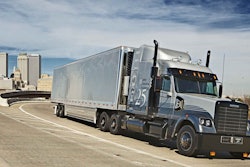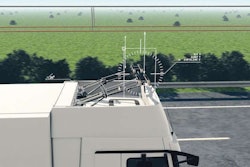
Emphasis: Safety, retention and workers comp
Data used: Extensive trucking data, such as drivers’ starting times or change in empty miles relative to fleet average
Target customers: Fleets of 500-plus trucks
A unit of Omnitracs, FleetRisk Advisors positions itself explicitly as a vendor of predictive analytics, and a good one: It received the IBM Business Analytics Excellence award in the ROI Achievement category in 2013.
The FleetRisk model uses a broader data set to spot patterns that can be more accurate than what fleets traditionally have predicted using more simplistic analysis, says Jain.
 David Broyles, operations manager for Averitt Express, says the fleet has found retention to be a “byproduct” of using FleetRisk Advisors’ safety module.
David Broyles, operations manager for Averitt Express, says the fleet has found retention to be a “byproduct” of using FleetRisk Advisors’ safety module.Every fleet uses some version of “scorecarding,” says Jain, “where the fleet creates a set of attributes” such as hard-braking events or violations. “They also try to make an extrapolation that if they’re not performing well, they’re probably at a higher risk.”
However, FleetRisk’s analyses show insufficient correlation there. Likewise, the company has found little correlation between accident risk and related data generated by the federal Compliance Safety Accountability program.
“What we do is gather 1,500 to 2,000 data points from fleets,” says Jain. That includes not only driver performance data, but also operational data such as telemetrics, driver start times and variances in driver schedules, pay and miles.
A fleet client can check its website account “to review a list of drivers most likely to have a preventable accident, voluntary turnover, or workers comp claim in the next 28 days,” says the FleetRisk website.
Managers typically then would hold a 15- to 20-minute remediation talk with each driver on that list, Jain says. “Not to address the issue necessarily, but to assure them the fleet is there to support him through his challenges.”
It’s common to find certain behaviors point to a driver stressed for a personal reason – a pregnant wife, a sick child or a pending divorce. The solution is to decrease the stress, Jain says, by helping the driver manage that situation, whether through counseling or other means, and not to punish him.
One fleet customer talked with a driver who appeared to be at risk and discovered that his wife of 40 years had died. He kept driving “just to keep his mind off things,” but had not come to terms with the death, Jain says. The fleet gave him a week of paid leave.
The system also helps fleets in that they “don’t have the time or resources to call all drivers every few months or weeks,” says Jain. “We’re able to help them talk to the right driver at the right time on the right subject.”
FleetRisk says every one of its customers has seen retention increase. That’s true even for those who use only FleetRisk’s safety application “because drivers now feel connected,” says Jain.
When fleets remediate with the 10 percent of drivers most at risk for an accident, those drivers have post-remediation accident rates that are 85 percent lower than what the remaining 90 percent of drivers experience, FleetRisk says.
The cost is $6 per month per driver for each of the three models: safety, workers comp and retention.
Case study: Averitt Express
 Averitt Express is using FleetRisk for the 1,300 to 1,400 trucks in its truckload division and the 700 in its dedicated division.
Averitt Express is using FleetRisk for the 1,300 to 1,400 trucks in its truckload division and the 700 in its dedicated division.In its six years of working with FleetRisk, Averitt Express has made big improvements in safety, says David Broyles, operations manager. The Cookeville, Tenn.-based company is using FleetRisk for the 1,300 to 1,400 trucks in its truckload division and the 700 in its dedicated division. In the last three years alone, Averitt’s truckload division has seen a 41 percent drop in preventable accidents.
The fleet is using only FleetRisk’s safety module but has found retention to be a “byproduct” of that effort. With the advent of Qualcomm years ago, Averitt, like many fleets, “quit using the telephone like we used to,” says Broyles. “You lose that relationship-building with drivers.”
Now, when the data identifies at-risk drivers in need of remediation, “We’re forcing the fleet manager to get back in the business of talking to drivers on the phone,” says Broyles.
Averitt started with identifying the 10 percent of drivers most likely to be facing an accident in the near future. As the accident rate dropped for that group, managers began addressing the top 30 percent.
Some typical predictors at Averitt have been financial stress, accidents in the past 90 days, and the frequency of working midnight to 5 a.m. in the past two weeks.
Broyles says some “curious” predictors also have emerged. Even though the company pays for empty miles, drivers with the most empty miles were the most accident-prone.
One big operational change has been getting proactive with fatigue. By measuring the frequency of overnight driving, each driver gets an ongoing fatigue rating. “If the fatigue number goes up, we change their dispatch,” Broyles says.











